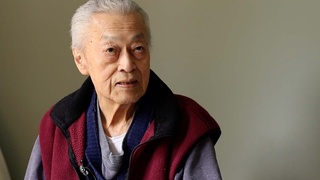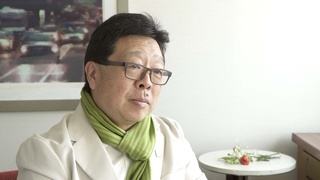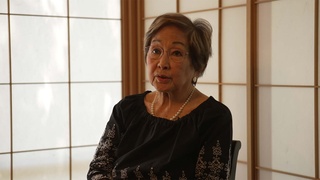Interviews
Growing up in segregated schools
I grew up in a very humble background: my parents were sharecroppers farmers, our living quarters were unpainted shacks, no running water, no electricity, outhouses – which I thought was normal.
I went to about five or six elementary schools - the earliest ones which were one-room school houses. And they were socially and economically segregated. In Sacramento County, where I spent third or...where I almost flunked third grade, schools were segregated. The Caucasian students went to one school and the Asian…and as far as I can remember we were all Japanese—there were no Chinese, no Filipinos…black–we never even saw one.
Date: January 3, 2015
Location: California, US
Interviewer: Lily Anne Y. Welty Tamai
Contributed by: Watase Media Arts Center, Japanese American National Museum
Explore More Videos

Experimented using portable video systems with kids
(1934–2018) Japanese American designer, educator, and pioneer of media technologies

Popular Sports in the Nikkei Community (Japanese)
(b. 1962) Nisei Japanese Argentinian, currently residing in Japan

Food preparations for Keirokai
(b.1974) Japanese Colombian who currently resides in the United States

Japanese reputation in Colombia
(b.1974) Japanese Colombian who currently resides in the United States

Interracial marriage trends
(b.1974) Japanese Colombian who currently resides in the United States

Art helped him to feel less foreign in school
(b. 1938) Japanese Peruvian incarcerated in Crystal City

Influence of Mexican culture after returning from camp
(b. 1943) Japanese American transgender attorney

Impact of army service in Vietnam
(b. 1943) Japanese American transgender attorney

Japanese American solidarity
(b. 1943) Japanese American transgender attorney

First Exposure to Animation
(b. 1934) Award-winning Disney animation artist who was incarcerated at Topaz during WWII

Japanese community in Mission
(b. 1922) Canadian Nisei who was unable to return to Canada from Japan until 1952

Learning American cooking
(b.1909) Nisei from Washington. Incarcerated at Tule Lake and Minidoka during WWII. Resettled in Chicago after WWII

Parents in Utah
(b. 1939) a businesswoman whose family volunterily moved to Salt Lake City in Utah during the war.

Not bringing shame to family
(1926 - 2012) Scholar and professor of anthropology. Leader in the establishment of ethnic studies as an academic discipline

Role of the Japanese American National Museum
(1926 - 2012) Scholar and professor of anthropology. Leader in the establishment of ethnic studies as an academic discipline
